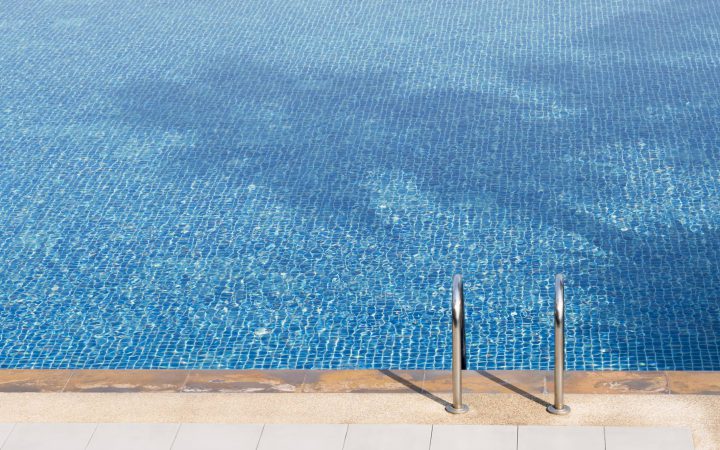Lifeguards in Germany are warning parents to be more vigilant after the country recorded more than 300 drowning deaths this summer alone.

The warning was sent by the German Lifeguard Association, which consists of 40,000 volunteer lifeguards. The association said the high number of drownings this year can be linked to parents who are too “fixated” on their phones.
READ MORE: Montreal increases age limit for unsupervised children in public pools
The organization’s spokesman, Achim Wiese, said parents and guardians are told to put their phones away — but many don’t listen.
“Too few parents and grandparents are heeding the advice: when your children and grandchildren are in the water, put your smartphone away,” Wiese said, according to The Guardian.
WATCH: Multiple drownings in B.C. already this year

There has been a greater focus on drowning deaths in Europe this year, amid a record-setting heat wave.
Drownings made headlines across Germany earlier this summer when six people died in separate incidents within 24 hours. They included a six-year-old boy who died in hospital after an accident at Neumühlsee lake, the German news organization The Local reported.
READ MORE: Manitoba top spot for young children drowning deaths once again
An increased number of drownings across the continent have also prompted other countries to issue warnings. In July, Royal Life Saving Society UK issued an urgent warning after seeing a jump in drowning reports.
“We understand how tempting it is to cool off in the nearest body of water and we don’t want to stop people having fun,” a release from the organization read. “All we ask is that people take some simple, quick precautions to help keep them, their families and their friends safe.”
WATCH: Lifesaving Society shares safety tips for swimming

While distracted parents and guardians can be a risk, the Canadian Red Cross says there’s no research to specifically link phone use to drownings.

Get weekly health news
“Cellphones can be a distraction, and there are lots of things can be used as a distraction, but in Canada there is no evidence to support that caregivers looking at their smartphones are leading to more drownings of children,” Kevin Paes, the organization’s national manager of swimming and water safety, told Global News.
“We just know that there are lots of distractions that can happen when families are swimming.”
Paes said simple things, such as a quick conversation, can classify as a distraction and parents need to “actively supervise” children.
“Another challenge is when a parent or supervisor is distracted, they don’t replace their supervision,” he said, noting that even leaving to use the bathroom can be risky without a replacement.
READ MORE: 82-year-old woman dead after swimming accident, Nova Scotia RCMP says
Parents should also be educated about warning signs of distress, such as a child struggling to touch the bottom of the pool with their feet, or using side panels of the pool to move around, Paes said.
According to the 2018 Canadian Drowning Report, produced by the Lifesaving Society, there were 423 unintentional “water-related fatalities” in Canadian waters in 2015. Preliminary numbers show that at least 283 such deaths occurred in 2017.
The 2015 numbers, which are the latest across-Canada statistics available, show that drowning deaths have been on a downward trend for the past 25 years.
The report explains that fatality rates were highest among seniors aged 65 and older. The lowest downing rates were among children aged five to 14.
WATCH: Drowning deaths declining in every Canadian province except one

Barbara Byers who works with Lifesaving Society explained that the organization has never found a proven link between phones and drownings.
“I couldn’t say that there has been an increase on that basis,” she told Global News.
But Byers added that it is a concern, and parents should stay off their phones as much as possible.
“We tell parents to put their phones down because drownings can happen very quickly.”
Paes explained Canada typically sees about 35 drowning deaths of children aged one to 14, and almost all are in unsupervised pools.
WATCH: Recent drownings renew calls for newcomer swimming classes, more education

“In a really bad year, maybe one of those is in a lifeguard setting,” he said, adding they are more likely to occur in backyard pools or unsupervised beaches.
That’s why Paes said opting for public pools with lifeguards is the safest option.
“Swimming in a supervised pool is the best place to swim.”
The Canada Safety Council also warns on its website for parents and guardians to take several precautions around bodies of water.
READ MORE: Life-jackets vs. PFDs — What’s the difference?
It explains that “active supervision” for children under five years of age means staying within arms reach. There should be one adult supervisor for every baby in water, and one adult for every two small children. For older children, guardians should “watch closely,” the organization advises.
“Do not rely on a ‘buddy system’ to keep kids safe, or make older children responsible for younger ones,” the council’s website reads.
It also notes that young or weak swimmers should wear life jackets in and around water.








Comments